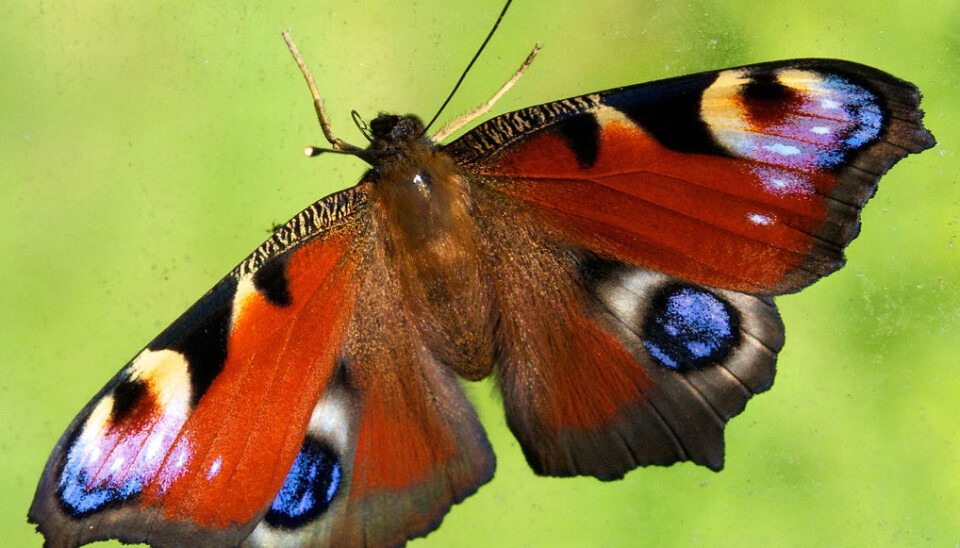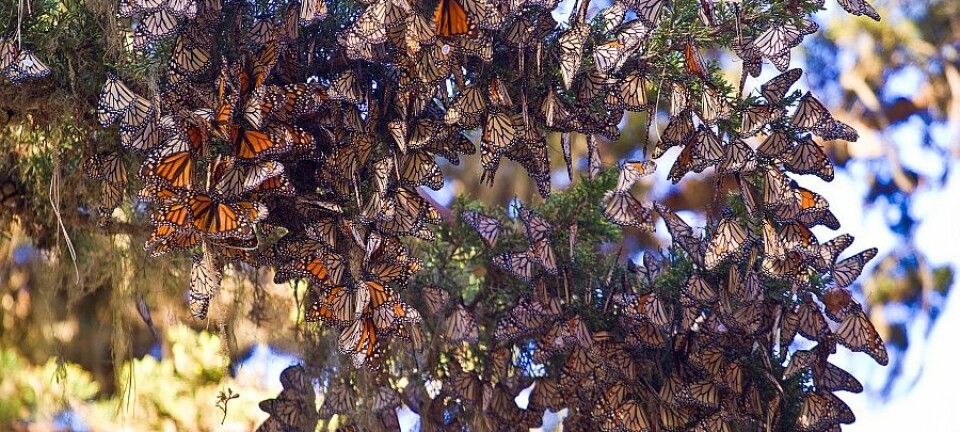
Butterfly with four eyespots spooks big predators
The eyespots on this butterfly's wings are big enough to scare full-grown chickens.
The four eyes on the wings of the peacock butterfly (Inachis io) are an effective evolutionary defence mechanism, if the insect's wide distribution throughout Europe and temperate Asia is any indication.
A Swedish study reports that the butterfly's potential predators in Scandinavia, particularly small birds such as the great tit and the blue tit, have been shown to be frightened by the butterfly's eyespot wing decoration.
But now Swedish researchers have found that even a domestic chicken, which has roughly 50 times the body mass of a blue tit, will send out an alarm call when it spots the butterfly's eyelike markings.
Chickens typically sound an alarm when predators such as foxes or cats are nearby.
Predator eyes
“At rest, the peacock butterfly folds its wings and closely resembles a dried leaf. But if it is disturbed it changes tactics drastically, quickly extending its wings to display two mock pairs of eyes,” says Martin Olofsson, a researcher at Stockholm University, in a press release. “Studies have shown that this will cause small birds in the wild, such as great tits and blue tits, to refrain from attacking.”
These birds are scared off, even though the butterfly is totally harmless and would actually be a tasty meal.
Researchers think small birds fear the mock eyes, which resemble the eyes of predators, such as the Eurasian pygmy owl.
Watching out
Domestic chickens showed clear signs of alarm and moved away when they saw the twin pairs of eyes and the strong colours surrounding them.
“We staged several interactions between hens and the butterflies, either with the eye markings displayed or with these spots painted over,” Olofosson states in the Stockholm University press release.
Chickens exposed to the butterflies with their eyespots intact were jumpy and on the watch. They were hesitant about approaching the fragile insect again.
They also showed a greater tendency to cluck warning calls to nearby hens than when the butterflies lacked eyespots.
--------------------------
Read the Norwegian version of this article at forskning.no
Translated by: Glenn Ostling






